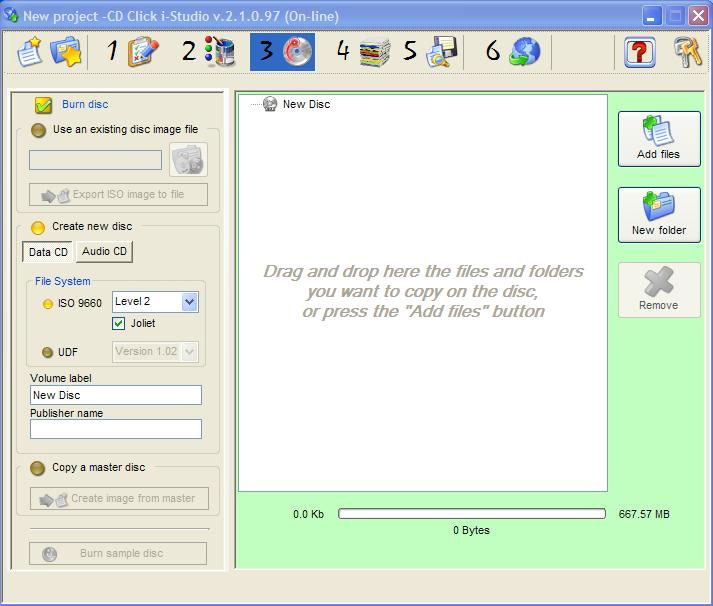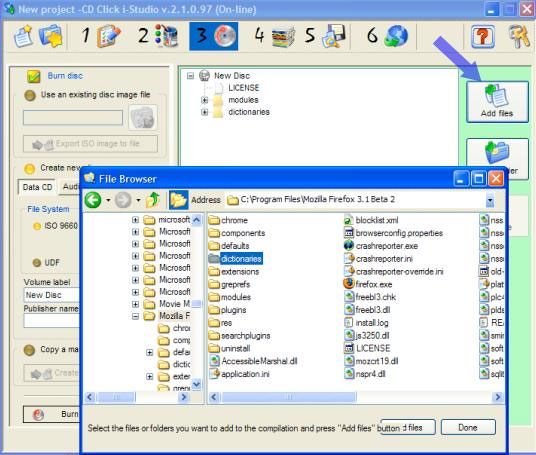
You get this windows only if you selected "CD" while in "project definition window" (step 1)
The "create a Data CD" menu allows you to build a CD or DVD image file ( the content of your disc) with the files present in your PC or any place in the network
Before you start dragging and dropping the files in the "create a Data CD" window, you have to configure the properties of your data disc. The options are:
ISO 9660: The most common format for data disc. Can be used for Blu Ray, CD and DVD disc. ISO 9660 have been used as the main CD format for many years now. Most of the CD nowsdays still use this format, the benefit of this format is that it is readable by all CD drive or CD player, and can be shared between PC and MAC.The other options are:
Level 1: File names are limited to eight characters with a three-character extension, using upper case letters, numbers and underscore only. The maximum depth of directories is 8. The 8.3 format guarantees maximun readability across platforms.
Level 2: File names are not limited to 11 characters (the 8.3 format) but can be up to the maximum allowed by the 1 byte counter in the directory entry and the filename length byte counter. Typically, this is close to 180 characters, depending on how many extended attributes are present. These special characters are supported"@ - ^ ! $ % & ( ) # ~" and the maximum depth of directories is 32.
Joliet: This extension supports names stored in Unicode, thus allowing almost any character to be used, even from non-Latin scripts.Recommended settings: ISO 9660/ Level 2/ Joliet
UDF: Universal Disk Format (UDF) is a newer file system for CD and DVDdeveloped and managed by the Optical Storage Technology Association as the successor to the ISO 9660 standard. UDF overcomes limitations of ISO 9660 and redirectors such as CDFS. UDF is used to ensure compatibility across platforms, as well as among various BD and DVD applications. UDF is required for DVDs, and is used by DVD to contain MPEG audio/video streams. UDF supports lower and upper case characters, up to 255 long and large file size. Operating systems compatibility: Windows 98 and Windows 2000 require a driver to be installed. Windows XP and Windows 7 offer native support for UDF. Mac OS supports UDF nativily from version 8.1. GNU/Linux support UDF from kernel 2.2.10. UDF Version 1.02 is the most popular.
Volume Label: Enter here the name that will be displayed when you first insert the Disc in the PC reader.
Publisher Name: Enter here the name of the disc publisher
DRAG&DROP:

Click on the "add files" button.
You'll see an explorer window. You can drag&drop the files and folders from the explorer to the i-Studio window and you'll see the content of the new CD rowing in the i-studion windowand when finished,
Click on the packaging icon to select your preferred disc packaging.
Please be aware that i-Studio won't build and save the ISO image till you save your project (step 5).